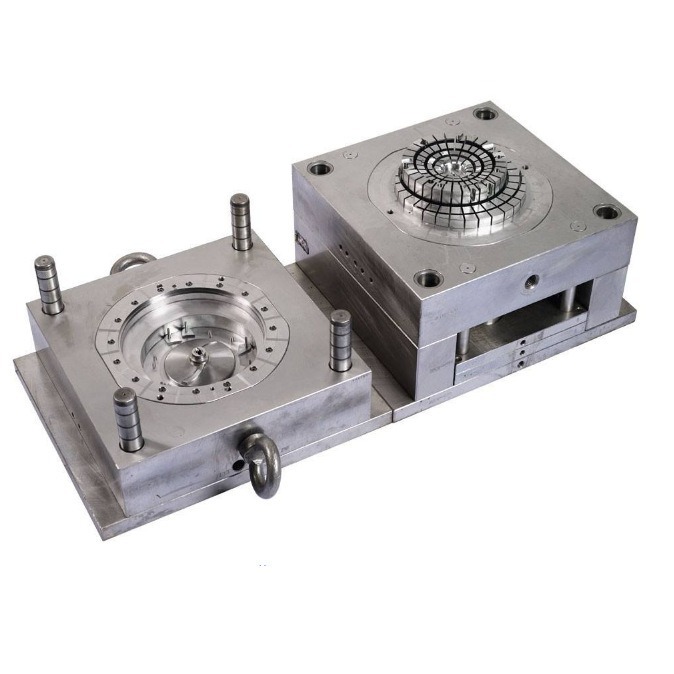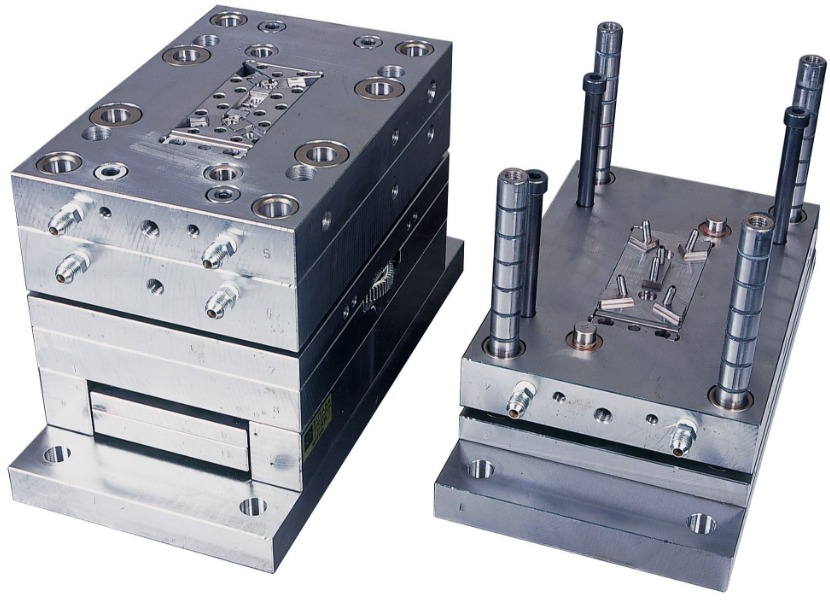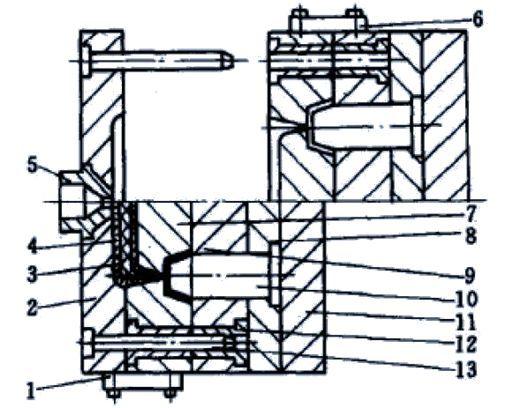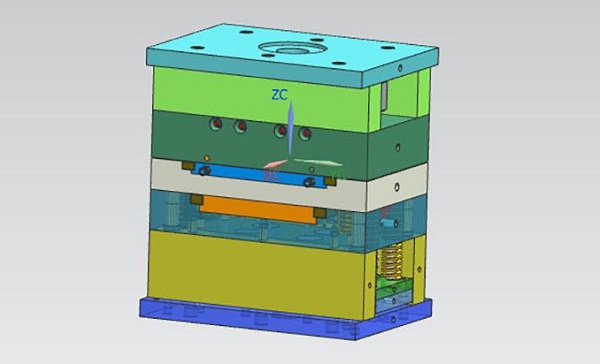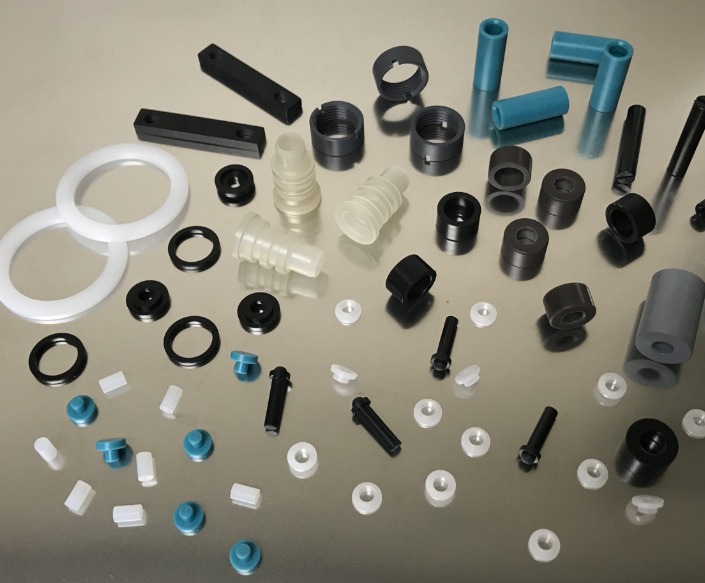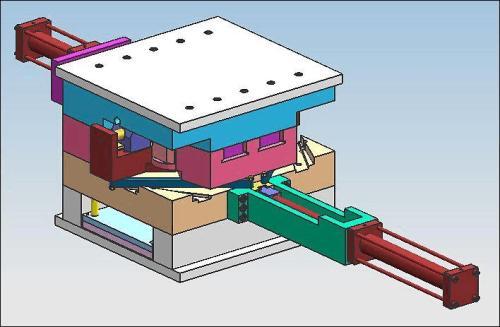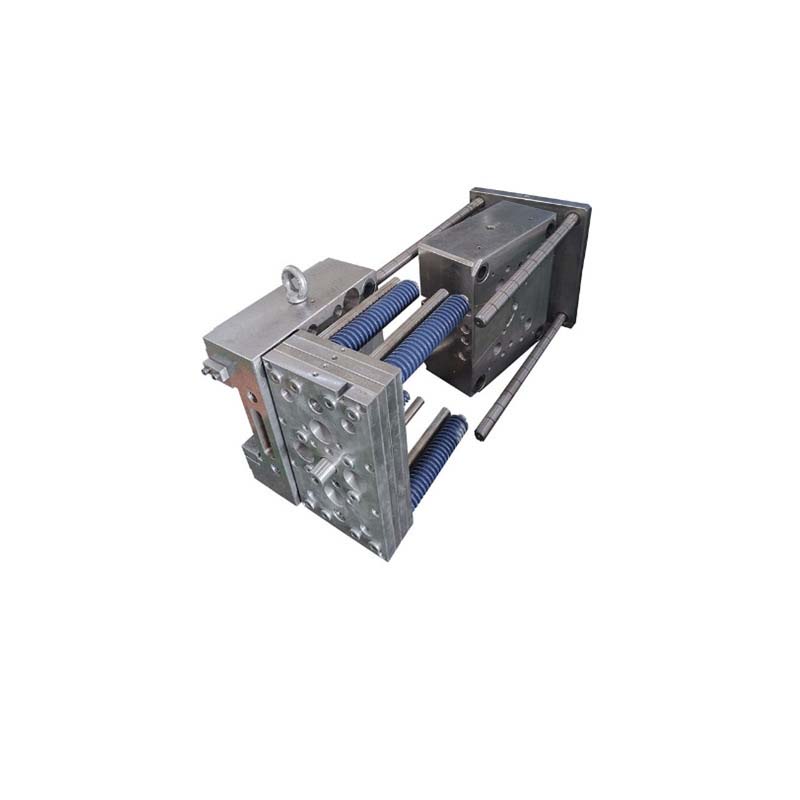Introduction
In the vast realm of modern manufacturing, plastic molds play a pivotal role. They are the unsung heroes behind the production of countless everyday items, from the sleek casings of our smartphones to the durable components in our automobiles. In fact, according to a recent industry report, over 70% of all plastic products in the market today are manufactured using plastic molds. This statistic alone highlights their significance in the manufacturing landscape.
The precision achieved in plastic mold manufacturing is nothing short of remarkable. It's not just about creating a basic shape; it's about crafting components with tolerances that can be as precise as a few micrometers. This level of accuracy is crucial in industries such as aerospace and medical, where even the slightest deviation can have catastrophic consequences. For instance, in the production of medical implants, a well - crafted plastic mold ensures that the implant fits perfectly within the human body, minimizing the risk of rejection or malfunction.
So, how exactly does the plastic mold revolution achieve such precision? This is a question that lies at the heart of this article. Yigu Technology will delve deep into the advanced technologies, innovative materials, and meticulous processes that are redefining the art and science of plastic mold manufacturing. By the end, you'll have a comprehensive understanding of the inner workings of this fascinating field and how it continues to shape the products we use every day.
The Basics of Plastic Molds
Definition and Function
A plastic mold can be defined as a specialized tool or cavity - shaped structure that is used in the manufacturing process of plastic products. Its primary function is to shape molten plastic materials into specific forms. When plastic pellets are heated to a molten state, they are injected, compressed, or blown into the mold cavity. Once inside, the plastic takes on the exact shape and dimensions of the mold, and after cooling and solidifying, a finished plastic product is produced. This process is highly efficient and precise, allowing for the mass production of identical plastic items with consistent quality. For Yigu Technology example, in the production of plastic beverage bottles, the plastic mold determines the bottle's shape, including its curves, neck size, and overall dimensions, ensuring that each bottle produced is suitable for filling, capping, and distribution.
Types of Plastic Molds
There are several types of plastic molds, each with its own unique characteristics, suitable applications, and advantages and disadvantages. Here is a comparison presented in a table:
| Type of Plastic Mold | Suitable Scenarios | Advantages | Disadvantages |
| Injection Molding Mold | Ideal for producing high - precision, complex - shaped plastic products such as electronic device housings, small gears, and intricate toys. It is also widely used in mass - production scenarios due to its high production efficiency. | High production speed, capable of producing multiple parts in a single cycle. Can achieve high precision with tight tolerances (as low as ±0.01mm in some advanced cases). Allows for the creation of complex geometries with internal features like threads and cavities. | High initial investment cost for mold manufacturing. Complex molds may require long lead times for design and production. |
| Compression Molding Mold | Suited for molding large, thick - walled plastic products like automotive bumpers, large industrial containers, and some types of furniture components. | Can handle large - scale production of relatively simple - shaped products. Lower pressure requirements compared to injection molding, which can be beneficial for certain materials. The mold structure is often simpler, reducing manufacturing costs for some applications. | Lower production efficiency compared to injection molding. Limited in creating highly complex shapes. May require longer curing times for some materials. |
| Blow Molding Mold | Mainly used for manufacturing hollow plastic products such as plastic bottles, containers, and some automotive parts like air ducts. | Highly efficient for producing hollow objects. Can produce large - volume hollow products with uniform wall thickness. Low material waste as the process is designed specifically for hollow shapes. | Limited to producing hollow - shaped products. Less precise in terms of some dimensional tolerances compared to injection molding, especially for non - critical external features. |
| Extrusion Molding Mold | Appropriate for continuous production of plastic profiles with a constant cross - section, such as plastic pipes, window frames, and plastic sheets. | High - speed continuous production, which is very cost - effective for long - run production of profile - shaped products. Can use a wide range of plastic materials. | Limited to products with a consistent cross - sectional shape. The process may require additional finishing operations for some applications. |
The Revolutionary Process of Plastic Mold
Design Phase
The design phase is the cornerstone of plastic mold manufacturing. In today's advanced manufacturing environment, the use of Computer - Aided Design (CAD) and Computer - Aided Manufacturing (CAM) technologies has become the norm. These technologies allow designers to create highly detailed 3D models of the mold. By using CAD software, every aspect of the mold, from its overall structure to the tiniest internal features, can be precisely defined.
For Yigu Technology example, in the design of a plastic mold for an electronic product's outer shell, CAD technology enables the designer to accurately control the wall thickness, the position of any inserts, and the draft angles. The ability to work in a digital environment means that multiple design iterations can be carried out quickly and cost - effectively. Once the design is finalized in the CAD system, it can be directly transferred to the CAM system for manufacturing instructions.
Data shows that this data - driven design approach has significantly improved the quality of plastic molds. In a case study of a major electronics manufacturer, after adopting advanced CAD/CAM technology for the design of their smartphone shell molds, the product rejection rate due to mold - related defects was reduced by 20%. This not only saved production costs but also improved the overall quality and market competitiveness of the products.
Material Selection
The choice of mold material has a profound impact on the performance of the mold and the quality of the final plastic product. Different mold steels have unique properties, and selecting the right one is crucial.
NAK80 is a popular mold steel known for its excellent machinability. It can be easily processed into complex shapes, which reduces the machining time and cost. Moreover, it offers a high - quality mirror surface finish, making it an ideal choice for molds where the surface finish of the plastic product is of utmost importance, such as in the production of optical lenses or high - end cosmetic packaging.
On the other hand, S136 is highly regarded for its corrosion - resistance properties. In applications where the plastic mold is exposed to moisture or corrosive substances during the manufacturing process, S136 is the go - to material. For instance, in the production of plastic molds for medical products like syringes or medical device housings, S136 is often used. Since these products need to meet strict hygiene and sterilization requirements, the corrosion - resistance of S136 ensures that the mold remains in good condition over a long service life, maintaining the quality and integrity of the medical products.
The following Yigu Technology table provides a comparison of some common mold steel materials:
| Mold Steel | Machinability | Mirror Finish Ability | Corrosion - Resistance | Application Examples |
| NAK80 | Excellent | High - quality mirror finish | Moderate | Optical components, high - end packaging |
| S136 | Good | Good | High | Medical products, food - contact products |
| P20 | Fair | Average | Low | General - purpose plastic products, toys |
Manufacturing Process
The manufacturing process of plastic molds is a multi - step and highly precise operation. It begins with mechanical processing, which often includes Computer Numerical Control (CNC) machining. CNC machines are capable of achieving extremely high precision, with tolerances as low as ±0.001mm in some advanced models. This high - precision machining is used to create the basic shape of the mold, including the cavity and core. For example, in the production of a mold for a small, intricate plastic gear, CNC machining can accurately cut the teeth profiles and other fine details.
Another important mechanical processing method is Electrical Discharge Machining (EDM). EDM is particularly useful when creating complex shapes or features that are difficult to machine using traditional methods. It works by using electrical discharges to erode the metal of the mold blank. This allows for the creation of sharp corners, deep cavities, and other complex geometries. For instance, in the production of a mold for a plastic part with internal undercuts or complex cooling channels, EDM can be used to accurately machine these features.
After the mechanical processing, heat treatment is often carried out. Heat treatment improves the mechanical properties of the mold steel, such as hardness, toughness, and wear - resistance. Different heat treatment processes, such as quenching and tempering, can be applied depending on the specific requirements of the mold. For example, quenching can significantly increase the hardness of the mold steel, making it more resistant to wear during the plastic molding process.
Surface treatment is the final step in the manufacturing process. Surface treatments like electroplating, nitriding, or polishing can improve the surface finish, corrosion - resistance, and release properties of the mold. Polishing the mold surface can reduce friction during the plastic injection process, making it easier for the plastic to flow into the mold cavity and for the finished product to be ejected. Nitriding can enhance the surface hardness and wear - resistance of the mold, extending its service life.
Precision - Crafting Elements
Tolerance Control
Tolerance control is of utmost importance in plastic mold manufacturing. It determines the degree of deviation that is acceptable between the actual dimensions of a plastic product and its intended design dimensions. In industries such as aerospace and medical device manufacturing, where the performance and safety of the final product are critical, tight tolerance control is non - negotiable.
Advanced equipment and processes play a crucial role in ensuring high - precision tolerance. For Yigu Technology example, high - end CNC machining centers are equipped with advanced servo - control systems. These systems can precisely control the movement of the cutting tools, allowing for extremely accurate machining of the mold components. In addition, real - time monitoring technologies are often used during the manufacturing process. Sensors can detect any deviations in the machining process immediately, and the control system can then make automatic adjustments to correct these deviations.
The tolerance ranges for different precision - level molds vary significantly. For general - purpose plastic molds, the tolerance may be in the range of ±0.1mm. However, for precision molds used in high - tech applications, the tolerance can be as low as ±0.01mm or even lower. In the production of micro - electronic components, some molds can achieve tolerances in the micrometer range, which is an astonishing level of precision. This high - precision tolerance ensures that the plastic parts can fit together perfectly, reducing the need for post - processing and improving the overall quality and performance of the final product.
Surface Finish
The surface finish of a plastic mold has a profound impact on both the appearance and performance of the plastic product. A smooth surface finish can enhance the aesthetic appeal of the product. In consumer goods such as smartphones, tablets, and high - end household appliances, a high - quality surface finish gives the product a more luxurious and refined look, which can significantly increase its market competitiveness.
Moreover, surface finish also affects the product's performance. In applications where the plastic part needs to have low friction, such as in mechanical components or medical devices that need to move smoothly within the body, a smooth surface finish is essential. It reduces the resistance during movement, improving the efficiency and lifespan of the component.
There are several methods to achieve a high - surface finish. Polishing is a common technique. Different grades of polishing can be carried out, from rough polishing to fine polishing. Rough polishing is used to remove large - scale surface imperfections, while fine polishing can achieve a mirror - like surface finish. For example, in the production of molds for optical lenses, a high - quality polishing process is required to ensure that the lenses have excellent light - transmission properties without any surface defects that could distort the light.
Electroplating is another effective surface treatment method. By depositing a thin layer of metal on the mold surface, electroplating can not only improve the surface finish but also enhance the mold's corrosion - resistance and wear - resistance. For example, nickel electroplating is often used on plastic molds for automotive parts. The nickel - plated surface not only provides a smooth and shiny finish but also protects the mold from corrosion during the manufacturing process, which may involve exposure to various chemicals and environmental factors.
The following Yigu Technology table shows a comparison of different surface treatments and their resulting effects:
| Surface Treatment Method | Surface Smoothness (Ra value in μm) | Impact on Aesthetic Appeal | Impact on Performance (Friction, Corrosion - Resistance) |
| No Treatment | 1 - 5 | Poor, with visible surface roughness | High friction, low corrosion - resistance |
| Rough Polishing | 0.1 - 0.5 | Moderate, some surface imperfections may still be visible | Reduced friction compared to no treatment, but still relatively high; no significant improvement in corrosion - resistance |
| Fine Polishing | 0.01 - 0.1 | High, mirror - like finish, very smooth to the touch | Low friction, suitable for applications with high - precision movement requirements; still limited corrosion - resistance |
| Electroplating (Nickel) | 0.001 - 0.01 | High - gloss finish, metallic luster, very aesthetically pleasing | Low friction, excellent corrosion - resistance, enhanced wear - resistance |
FAQs
What factors should be considered when choosing a plastic mold material?
When choosing a plastic mold material, several key factors need to be taken into account. First and foremost is the product requirement. If the plastic product has strict requirements for surface finish, such as optical products, a mold material with good mirror - finish ability like NAK80 should be considered. For products that will be exposed to harsh environments, corrosion - resistance becomes crucial, and materials like S136 are more suitable.
The expected mold life also plays a significant role. For long - run production, a material with high wear - resistance and toughness is essential to ensure the mold can withstand repeated use without significant degradation. High - strength mold steels are often chosen in such cases.
Cost is another important factor. While high - performance materials offer excellent properties, they may come with a high price tag. For products with lower precision requirements and cost - sensitive applications, more cost - effective materials like P20 can be a viable option. Balancing the material cost with the overall production cost and product quality is key.
How can I ensure the precision of plastic molds during the manufacturing process?
To ensure the precision of plastic molds during the manufacturing process, several measures can be taken. First, choosing advanced equipment is crucial. High - end CNC machining centers can achieve extremely high - precision machining, with some capable of reaching tolerances as low as ±0.001mm. These machines are equipped with advanced servo - control systems that can precisely control the movement of cutting tools, ensuring accurate machining of the mold cavity and core.
Real - time monitoring during the manufacturing process is also essential. Sensors can be installed to detect any deviations in the machining process immediately. Once detected, the control system can make automatic adjustments to correct these deviations, maintaining the precision of the mold.
Strict quality control procedures should be implemented at every stage of the manufacturing process. This includes inspecting the raw materials, intermediate products, and the final mold. Non - destructive testing methods such as ultrasonic testing and X - ray inspection can be used to detect internal defects that may affect the mold's precision.
What are the common problems in plastic mold production and how to solve them?
In plastic mold production, several common problems may occur. One of the most common issues is flash, which is the thin excess plastic that forms around the edges of the mold. Flash can be caused by factors such as excessive injection pressure, incorrect mold closure, or worn - out mold components. To solve this problem, the injection pressure should be optimized, the mold should be checked for proper closure, and any worn - out parts should be replaced.
Shrinkage is another common problem. It occurs when the plastic material shrinks during the cooling process, leading to dimensional inaccuracies in the final product. To address shrinkage, proper mold design is crucial. This includes ensuring uniform wall thickness in the mold, using appropriate cooling channels to control the cooling rate, and selecting the right plastic material with a known shrinkage rate. Compensation can also be applied during the mold design stage to account for the expected shrinkage.
Air traps are areas in the mold where air becomes trapped, resulting in voids or defects in the plastic product. To solve this problem, venting systems should be properly designed in the mold. Vents allow the air to escape during the injection process, ensuring that the plastic fills the mold cavity completely without any air pockets.
